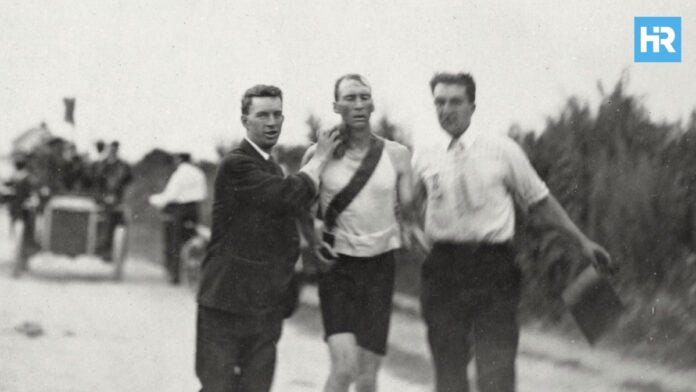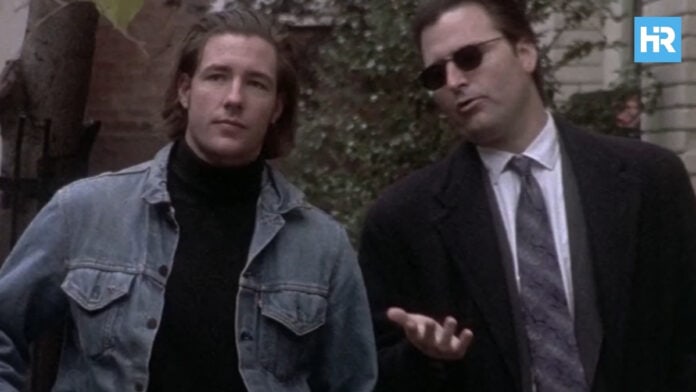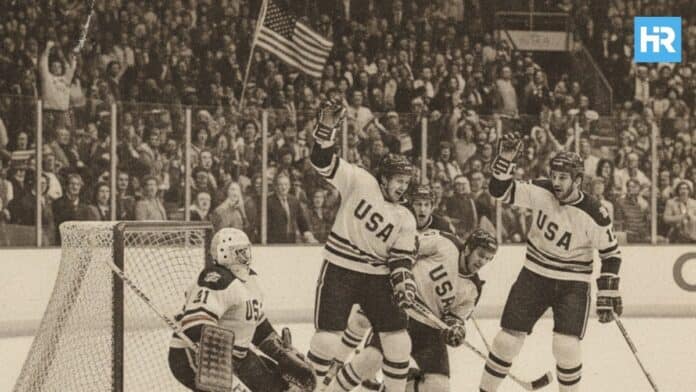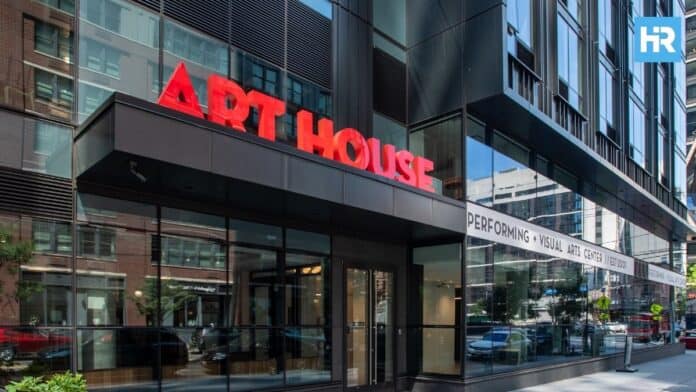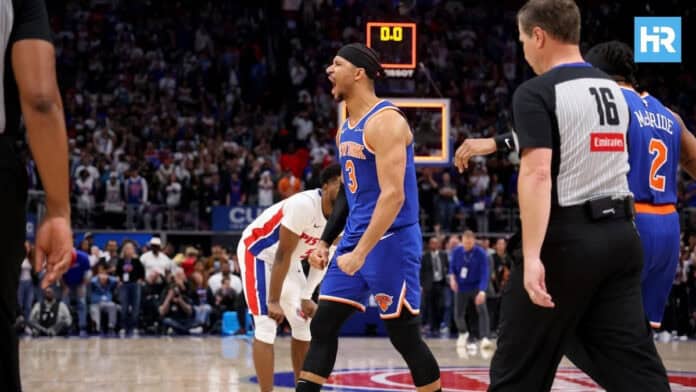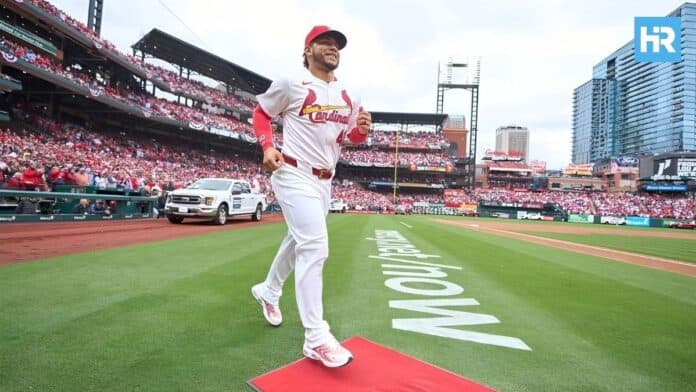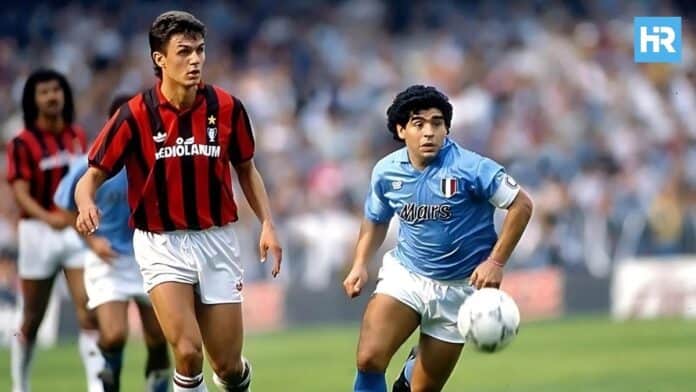No longer bound by the constraints of retail gambling, players in the Sunshine State can freely explore the best Florida online casinos.
With plenty of options floating around, we’ve decided to highlight the standout casinos that welcome Floridians with open arms. So whether you’re after a site with thousands of games, worthwhile bonuses, or fast payouts, you’re sure to find one that fits your gambling needs.
Ignition is our top recommendation, thanks to its impressive poker platform and $3,000 welcome bonus. However, it’s far from the only worthy casino site in Florida.
Ready to check out the top 5? Let’s dive in!
Best Florida Online Casinos – December, 2025
If you want to know how these Florida online casino sites scored in different categories and learn more about their standout features, keep reading. We have covered everything in the reviews below.
Are Online Casinos Legal in Florida?
In Florida, legal online gambling for real money is currently not available, though residents can join sweepstakes and social casinos. These platforms offer a range of games like slots and blackjack without real money stakes.
In addition, there are various out-of-state online casino sites that offer services to gamblers in Florida. Before the state regulates gambling and introduces new laws, you can use any of the sites listed here.
These sites are completely safe and secure to use. They feature thousands of casino games and some of the biggest bonuses we could find online – as long as you meet the legal gambling age, you can sign up for our top picks.
| Gambling Type |
Legal Status |
| Online Sports Betting |
Legal |
| Online Casinos |
Illegal |
| Online Poker |
Illegal |
| Daily Fantasy Sports (DFS) |
Unregulated (but available) |
| Retail Casino Gambling |
Legal (Tribal Casinos) |
Best Florida Online Casinos – Reviews
1. Ignition – Best Florida Online Casino Overall
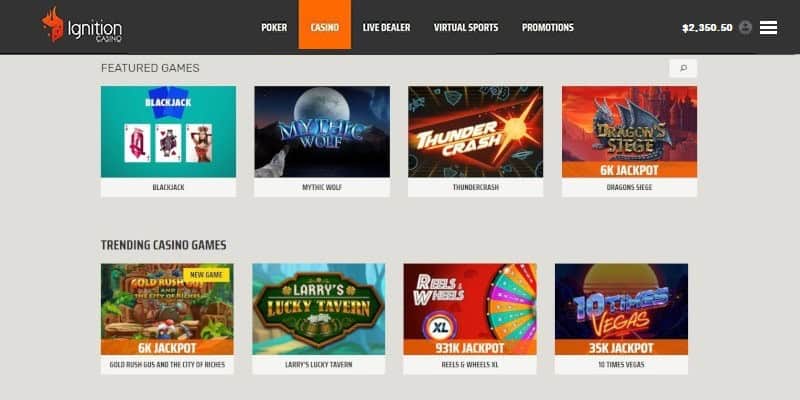
Pros:
- $3,000 welcome pack
- Over 250 casino games
- Crypto withdrawals in less than 24 hours
- Highest traffic for online poker
- Fully optimized mobile casino
- 24/7 customer support
Cons:
- Could have more banking options
- Credit card fees
Banking: Bitcoin, Litecoin, Ethereum, Visa, MasterCard & more.
Ignition is the best Florida online casino. It was created in 2016 with casino and poker players in mind; however, you can also bet on virtual sports here.
The gaming portfolio still covers everything you might want from a Florida online casino.
Want to try your luck spinning the reels at the best Florida casino online? No problem. Try Reels & Wheels XL, Wild Chicago, or Book of Cats. Provided by RTG, these Florida slots offer high-quality features and visuals.
Are you willing to join a poker room with professional players competing against each other? Or maybe you can try the wide variety of poker tournaments on the schedule.
There are two great welcome bonus options available at the best FL online casino. Fiat users can get a 100% match up to $1,000 for casino games and another $1,000 for poker, totaling $2,000 in bonuses. Crypto users score even bigger with a 150% match up to $1,500 for both casino and poker, unlocking up to $3,000 at the leading online casino Florida has to offer!
>> Claim a $3,000 welcome bonus
2. Lucky Creek – Best Florida Online Gambling Site for Bonuses

Pros:
- $7,500 welcome package
- Over 350 casino games
- High-quality live dealer tables
- 10 ongoing promos
- 24/7 customer support
- Fast & easy payouts
Cons:
- Dated website design
- Can’t try games for free
Banking: Credit and debit cards, prepaid or gift cards, and Bitcoin.
This Florida online casino offers one of the biggest bonuses around and hosts 350+ games from top providers like Betsoft and Rival.
We enjoyed the variety of real money slots at Lucky Creek, and the live casino impressed us, too – there are games like blackjack, baccarat, and roulette from Fresh Deck Studios, with stakes from $1 to $5,000.
New Florida casino players who make a minimum deposit of $20 at this online FL casino will get a 200% match deposit bonus up to $7,500 and 30 free spins on the Big Game slot.
To activate it, you need to use the bonus code 200GETLUCKY.
This is undoubtedly one of the most generous offers among FL online gambling sites.
>> Get $7,500 bonus + 30 free spins
3. Slots of Vegas – Best Florida Online Casino Real Money Site for Instant Payouts

Pros:
- $2,500 bonus + 50 spins
- Low wagering requirements
- Over 250 casino games
- Responsive 24/7 live chat
- Software available for Windows
Cons:
- Outdated web design
- No live dealer games
Banking: Bitcoin, Binance Coin, Visa, Mastercard, American Express, Discover & more.
It’s easy to get bored playing the same casino games, but that’s never an issue at Slots of Vegas. New titles are added regularly to this Florida casino online, keeping things fresh. It also ranks among the best online casinos in Virginia, showing that its appeal reaches far beyond the coast.
This real money online casino in Florida offers a solid mix of slots, table games, video poker, and specialty titles. You can also play in practice mode for free, which is perfect for beginners.
If you join this Florida casino and make a minimum deposit of $30 or more, you will get yourself a 250% match bonus up to $2,500. It only has a low 10x wagering requirement.
>> Claim up to $2,500 bonus
4. Slots.lv – Best Online Florida Casino for Jackpot Slots
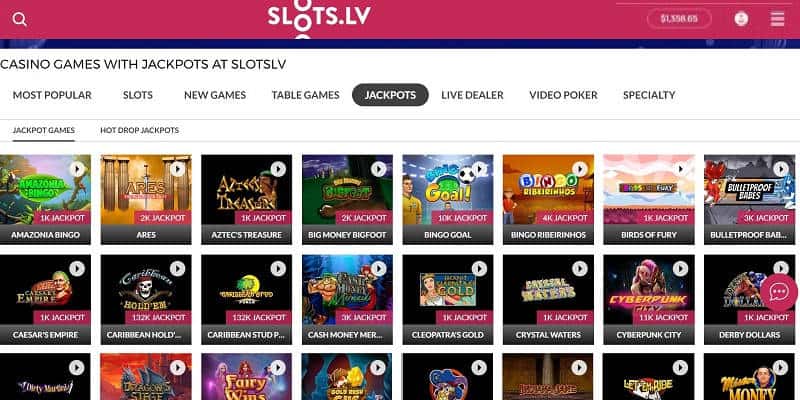
Pros:
- Up to $3,000 crypto welcome package
- Fiat welcome bonus of $2,000
- Demo mode available
- 1-hour crypto withdrawals
- Flawless instant-play feature
- $5 million each month in hot drop jackpots
Cons:
- No phone support
- Visa debit card withdrawal fees
Banking: Bitcoin, Tether, Ethereum, Litecoin, Visa, MasterCard & more.
Few real money online casinos in Florida rival Slots.lv when it comes to jackpots and mobile play. With 300+ games from providers like Betsoft, Rival, and Spinomenal, there’s plenty to explore.
Hot Drop jackpots are a major highlight at this Florida online casino, with hourly, daily, and weekly prizes on games like 777 Deluxe, Golden Buffalo, and Reels of Fortune. You’ll also find top-notch craps and video poker options, including Jacks or Better, Joker Poker, and Bonus Deuces Wild.
This Florida online casino offers a 100% welcome bonus of up to $2,000 and 20 free spins for fiat users, while crypto players can claim a 200% bonus of up to $3,000 with 30 free spins. Regular players can also enjoy referral rewards and earn loyalty points for playing their favorite games.
>> Grab your $3,000 welcome package
5. Super Slots – Highest-RTP Slots of All the Best Online Casinos Florida
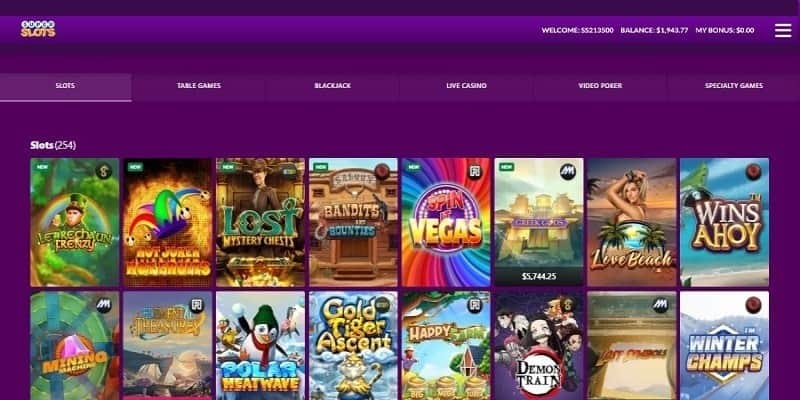
Pros:
- Over 440 online slots
- 300 free spins offer
- Great for mobile gambling
- 20+ secure payment options
- 24/7 live chat
Cons:
- No practice mode for games
- Website design can be improved
Banking: Bitcoin, Tether, Litecoin, AMEX, Discover & more.
No list of Florida online casinos is complete without Super Slots. True to its name, it’s a top pick for slot lovers, offering over 440 high RTP titles, including hits like Golden Fangs, Wrath of Thor, and Quest of Azteca.
But it’s not just about slots – this online casino in Florida also features 50+ table games, 60+ live dealer games, and a fun specialty section with crash games.
Fun Fact: Super Slots is also one of the top NY online casinos.
New players can claim 300 free spins starting the day after their first deposit, with each set valid for 24 hours. Winnings are capped at $100, but there are no wagering requirements, making it a hassle-free way to try out the slots.
>> Get 300 free spins with 0 WR
Online Gambling in Florida – Status, Regulations, and Taxes
Online gambling in Florida is available through several avenues, but real money online casinos haven’t been legalized just yet. There is pending legislation pushing to centralize online gambling under the Seminole Tribe, but any potential changes may take time.
As for available Florida online gambling options, mobile sports betting is currently offered in a limited capacity. Sweepstakes casinos are also available, providing an easier alternative for locals looking to play slots or table games online.
Still, there are other in-person gambling options offered throughout the state. Floridians can play games at tribal casinos, participate in pari-mutuel wagering (such as horse or greyhound racing), buy state lottery tickets, or play poker in licensed cardrooms.
You must be at least 21 years old to participate in any form of casino gambling. However, the limit is only 18 for the lottery and pari-mutuel betting.
When it comes to taxes, Florida doesn’t impose a state income tax, so online gambling winnings aren’t taxed at the state level. However, federal taxes still apply, and all winnings must be reported to the IRS.
Best Casinos for Real Money in Florida – Our Ranking Criteria
Security
Player safety is non-negotiable when evaluating the best online casino Florida sites. We only recommend ones that use advanced encryption technology to protect user data and transactions.
These Florida gambling sites are licensed by reputable regulatory bodies and adhere to strict fairness standards, including third-party audits of their games.
Secure sites also offer responsible gambling tools like deposit limits and self-exclusion options, making sure that players can enjoy the experience with peace of mind.
Game Selection
We carefully check whether the variety of games at the best online casinos in Florida is enough to cater to the needs of gamblers.
Each of the online FL casino sites on our list is packed with exciting online slots, table games, live dealer games, and specialty titles as well.
Bonuses and Promotions
Another important criterion in our ranking of the best online casinos in Florida is the quality and generosity of bonuses and promotions.
Online casinos in FL need to have competitive and transparent bonus structures and reward players for their loyalty.
Banking
The best Florida online casinos we featured excel in providing a variety of secure and efficient banking options.
These Florida online casinos support fast withdrawals and deposits through multiple methods, including cryptocurrencies, e-wallets, and credit cards.
The availability of diverse banking options ensures that online casino players can choose their preferred method with ease, improving the overall rankings of these casinos in FL.
Customer Support
Quality customer support is a vital feature of any top-rated Florida online casino. We evaluate the customer service teams’ efficiency, availability, and helpfulness.
The best online Florida casino sites provide multiple channels of support, including 24/7 live chat, email, and telephone assistance.
We also consider the responsiveness and knowledge of the support staff, ensuring that players in Florida can receive prompt and accurate help when needed.
User Experience and Interface
An online casino’s overall user experience and interface significantly influence our rankings. We look for online casino Florida real money sites that offer a smooth, intuitive, and hassle-free online gaming experience.
The criteria to land a spot on the best casinos Florida list include easy navigation, fast loading times, and a clean design that enhances player experience.
A great user interface, compatible with both desktop and mobile devices, ensures that players at online casinos in Florida have a pleasant and enjoyable time exploring the casino’s offerings.
We used similar criteria to rank the best Florida sports betting sites.
Florida Online Casinos VS. Social Casinos
Not sure whether to play at a real money site or try your luck with a social casino? Here’s a quick breakdown of how Florida online casinos compare to social casinos, so you can decide which option suits your style best:
| Online Casinos |
Social Casinos |
| Let you play real money games like slots, blackjack, and poker |
Use virtual currency or sweepstakes coins – no real money gambling involved |
| Offer deposit bonuses, free spins, and crypto promos |
Give out free daily coins or bonus entries, but rewards are non-cash |
| Available through out-of-state operators that accept Florida players |
Fully legal and accessible in Florida, as they don’t involve real money wagering |
| Better suited for serious players looking to win real cash |
Ideal for casual gamers who want casino fun without the financial commitment |
Red Flags to Avoid at Florida Online Casinos
Florida players have plenty of choices when it comes to gambling online, but not all sites deserve your trust. The good news is that spotting problems isn’t complicated.
A quick look at a site’s details can tell you a lot, whether you’re considering an online casino real money Florida platform or browsing reviews of the Florida best sites for gambling. Here are a few things worth paying attention to before you sign up.
Licensing Hard to Find
If an online casino Florida site makes you dig just to figure out who regulates it, that’s not a great sign. The best operators show this information right on the homepage or in the footer. If you can’t see it without scrolling through pages of small print, take that as a hint to move on.
Bonus Rules That Don’t Add Up
Everyone loves a good welcome deal, but if the fine print feels like a puzzle, you’ll likely end up disappointed. Look out for strange limits, missing details on wagering, or rules that just don’t make sense. Clear and honest terms are easy to spot, and plenty of casinos in Florida offer them.
Payouts That Drag On
When you win, you should be able to cash out without weeks of waiting. Some casinos process withdrawals in a day or two, while others take much longer with little explanation. If you’re trying out online gambling Florida real money, always check what players are saying about payment speed before depositing.
Popular Online Casino Games in Florida
The number of popular casino games available at Florida’s top casino sites is basically endless, so let’s take a look at the most popular ones so that you won’t feel lost when you get started.
Slots
We might as well call online slot machines the be-all and end-all of Florida online gambling, considering they always take up about 90% of the casino site’s entire game selection.
On top of standard 3-reel and 5-reel slots, there are now new games that offer more reels and even unique mechanics, including Megaways and Expanding Reel games. These games are popular at FL casinos online because they require no skill to play, and players get a chance to win big on the back of small stakes (even though the chances are slim).
Blackjack
The mother of all table games out there, blackjack is a super popular card game among Floridians, with online casinos offering hundreds of different blackjack variants with unique rules and various side bets.
One of the main reasons behind its popularity among Florida casino sites is that the RTP is high (around 99%), and the rules are simple – you need to get as close to a hand total of 21 without going over. That’s it; if your cards have a higher score than the dealer’s (while remaining equal to or under 21), you win.
However, to get that 99% win chance, you will need to practice basic blackjack strategy when playing at Florida casino apps.
Roulette
Roulette will always have a place among Florida online casinos, and that’s because it’s considered one of the most exciting forms of gambling.
While land-based casinos typically offer American and European roulette table games only, you can explore various other options at Florida casino sites, including La Partage, Auto Roulette, Jackpot Roulette, and more.
Craps
Although the craps experience will always be superior when played at land-based casinos (you’ve watched James Bond, right?), this is still a popular casino game at Florida online gambling sites.
You will usually find virtual craps games, but on the rare occasion, some online casinos Florida offers provide live dealer craps.
Poker
Not only in Florida, but poker has gone down as the most popular card game in the world. We’re not talking about video poker and other virtual poker games that you’ll find at online casinos, but rather tournaments and cash games, where you compete against other players.
Now, various Florida poker sites offer tournaments, and one such example is our top pick, Ignition.
Live Dealer Games
If you want to explore virtual table games in a more vivid format, live casino games offered by online casino Florida real money sites provide the perfect opportunity. You can interact with the dealer in real time, chat with other players, and enjoy high-definition streams that bring the casino floor straight to your screen.
The best Florida real money online casinos go beyond usual table games like blackjack and roulette — you’ll find interactive game shows inspired by hit TV franchises and even slot-themed games that bring the reels to life in style.
Specialty Games
Besides what we’ve listed, you will find plenty of other unique games, including Crash, Plinko, CS2 gambling games, Minesweeper, and many more that break the mold & offer a different kind of casino experience.
Best Casino Games for Online Gambling in Florida
Florida players have their go-to titles, and the most trusted online gambling sites keep rolling out a mix of old favorites and newer spins. These are the ones you’ll see people actually playing right now as part of the best online gambling experience.
Slots: Variety & Jackpots – Starburst never really goes out of style, and Gonzo’s Quest is another name that keeps showing up in lobbies. For jackpot chasers, Divine Fortune is usually the one people talk about.
Blackjack: Low House Edge – Classic Blackjack is offered at most online gambling Florida sites, and Infinite Blackjack works well if you don’t like waiting for a seat. Anyone looking at online blackjack Florida tables will notice these versions pop up again and again.
Roulette: Simple Thrills – The standard European Roulette wheel draws plenty of spins, while Lightning Roulette adds a bit of chaos with random multipliers. It’s the mix of tradition and flash that keeps it popular.
Poker: Strategy & Competition – Titles like Jacks or Better and Deuces Wild are steady picks. They play fast, and the payout tables give players something to work with if they pay attention.
Live Dealer Games: Real-Time Action – Live Blackjack and Live Roulette are constant favorites, and Baccarat Live gets its share of action too. The draw here is simple: real dealers, streamed straight in, which makes the whole thing feel less like a video game and more like a casino floor.
Types of Bonuses Available at Online Casinos in Florida
Online casinos in Florida offer a range of bonuses that are designed to either give you extra funds or additional opportunities to play. Here’s a breakdown of the most common types of bonuses you’ll come across:
Welcome Bonuses
Welcome bonuses are among the most popular offers at online casinos in Florida. These typically match your first deposit, sometimes up to 100% or more, giving you extra funds to start with.
Free Spins
Free spins allow players to spin the reels of selected slot games without using their funds. These are often part of welcome packages or ongoing promotions offered by the best online casinos in Florida and give you a chance to win real money with minimal risk.
Reload Bonuses
The best real money online casinos in Florida offer reload bonuses to existing players as a reward for continuous playing. They usually provide a percentage of your deposit as bonus funds, though the match percentage is often lower than what you’d get from a welcome bonus.
Cashback Bonuses
Cashback bonuses offered by the best FL online casinos give back a percentage of your losses over a period, usually through bonus funds or site credit. While they won’t eliminate your losses, cashback offers are a nice safety net, helping you extend your playtime and soften the blow of a losing streak.
No Deposit Bonuses
No deposit bonuses are rare and, when available, are usually relatively small in value. They often come with high wagering requirements, making it difficult to turn them into withdrawable cash. However, they still provide a fun way to try new games at top casinos online in Florida without risking your money.
You can find similar promotions at other top online casinos across the country, like those in Maryland.
Deposit and Withdrawal Options for Florida Casino Players
When playing at the best Florida online casinos, having smooth, fast, and secure payment options is essential. Thankfully, top-rated online casinos in Florida offer a range of banking methods designed to meet different player preferences, whether you prefer traditional methods like credit cards or modern solutions like e-wallets and cryptocurrencies.
Here are the most popular banking methods at the best casinos for real money Florida offers:
| Banking Method |
Explain Briefly |
| Credit/Debit Cards |
Widely accepted and easy to use, cards like Visa and Mastercard allow for instant deposits, though withdrawals can take 2–5 business days. |
| E-Wallets |
These are very popular for their speed and convenience. E-Wallets offer fast deposits and payouts, often processed within 24 hours. |
| Cryptocurrencies |
Bitcoin and other cryptocurrencies offer near-instant payouts, high level of anonymity, and lower fees. |
| Bank Transfers |
Best for larger transactions, bank transfers are secure but slower, often taking 3–7 business days for withdrawals. |
Land-Based Casinos in Florida vs. Online Casinos
Playing games at FL online casinos comes with a bunch of benefits you won’t get at land-based tribal casinos. Let’s have a look at some of them:
Online Casinos Pros & Cons
Convenience: Are you traveling or simply don’t feel like going out? No worries – visit the top Florida casino apps online and start real money gambling without the need to move somewhere else.
Diverse Game Selection: The Florida online gambling scene offers an extensive selection of games, from classic slots to cutting-edge live casino experiences. With so many options, it’s impossible for players to get bored.
Bonuses: Is it possible to boost your bankroll in a physical casino? Hardly ever. This is not the case for Florida casino sites, as they offer generous welcome bonuses, VIP rewards, and referral programs.
Availability: You can use most of the Florida gambling sites listed in this guide across a variety of states, including Texas and California – so there’s no need to switch between online casinos if you’re ever traveling outside of Florida.
Limited Social Interaction: Florida online casino gambling apps lack the social atmosphere of physical casinos, which can be a downside for those who enjoy the social aspect of gambling.
Land-based Casinos Pros & Cons
Atmosphere: The social and energetic environment of land-based casinos improves the gambling experience, offering a level of fun and interaction that online casinos can’t match.
Inconvenience: Land-based casinos require travel, accommodation, and other logistical considerations, which can be time-consuming and costly. On the other hand, online casinos in Florida are instantly available wherever you are.
No Bonuses: Typically, there are no welcome bonuses or other promotions to boost your initial bankroll at physical casinos, unlike online gambling Florida sites, which offer various incentives to attract players.
Local Casinos in Florida
While online gambling is somewhat still limited in the Sunshine State, Florida is home to a solid lineup of land-based casinos that deliver great atmospheres and real-time action. Here’s a quick look at some of the most popular local casinos in Florida worth checking out:
Seminole Hard Rock Hotel & Casino (Hollywood & Tampa)
These are easily the most iconic casinos in Florida – and for good reason. Both locations are massive, offering thousands of slot machines, a wide selection of table games like blackjack and baccarat, poker rooms, and even high-limit areas for high rollers. The Tampa location is known for its state-of-the-art poker room, while the Hollywood one is known for its famous Guitar Hotel and regular concerts from major acts.
Miccosukee Resort & Gaming Center (Miami)
Located at the edge of the Everglades, Miccosukee is another top tribal casino in Florida. With over 1,700 slot machines, bingo, and poker, it’s a great place for a day or night of classic casino fun. There’s also a hotel, restaurants, and frequent events that give it a community-friendly vibe.
Seminole Casino Coconut Creek
This stylish spot offers over 2,000 slot machines and 70+ live table games, including some of the best blackjack tables in the state. It’s a bit more intimate than the Tampa and Hollywood casinos but still delivers a high-end experience with quality dining and regular live entertainment.
Seminole Classic Casino (Hollywood)
This is where it all started – the original Seminole casino. While not as glitzy as its sibling properties, it’s still a go-to for players who want a straightforward gambling experience without the crowds. Expect plenty of slots, electronic table games, and a more laid-back vibe.
Hialeah Park Casino
Historic and elegant, Hialeah Park combines classic charm with modern gaming. It features over 800 slot machines, a poker room, and horse racing simulcasting. Located in the heart of Miami-Dade, it’s a beloved local institution for those who enjoy tradition with a touch of flair.
Florida Online Casinos – FAQs
Can You Gamble Online in Florida for Real Money?
Yes, Florida residents who have reached the legal gambling age can play online casino games at various gambling sites licensed in another jurisdiction. Right now, Florida doesn’t have legalized online casino apps that players can access, leaving offshore casinos and sweepstakes casinos as the only options for online gambling.
How Old Do I Have to be to Gamble in Florida?
To gamble online in Florida, you must be at least 21 years old. This applies to both international casinos and land-based venues offering traditional casino games. Some forms of gambling, like poker or bingo at pari-mutuel facilities, may allow entry at 18, but most real money online casinos follow the 21+ rule.
Always double-check the site’s terms before signing up to make sure you meet the age requirements.
What Is the Best Online Casino That Pays Real Money in Florida?
According to our rankings, Ignition is the best Florida casino online.
At this Florida casino site, you can play over 250 games powered by RTG and other quality providers, claim up to a $3,000 welcome package, and get an authentic online poker experience.
Are Online Casino FL Sites Safe?
Yes, Florida online casinos are safe, provided you choose licensed and regulated platforms.
Reputable Florida casinos, just like the ones on our list, prioritize player security through encryption and fair gaming practices, ensuring a secure environment.
Do Florida Casinos Online Offer Bonuses?
All the best Florida casinos online offer bonuses to both new and loyal players.
An example is the $7,500 welcome pack at Slots.lv, which covers your first 9 deposits on the site.
Do I have to Pay Taxes on Online Gambling Winnings in Florida?
Yes. While Florida does not impose a state tax specifically on gambling winnings, all gambling winnings, including from online casinos and online gambling Florida sites, are considered taxable income at the federal level.
This means you are required to report your winnings to the IRS when you file your federal taxes. It’s a good idea to keep detailed records of your gambling activities to ensure accurate reporting and avoid potential penalties.
How to Join Florida Casino Sites and Play Games Online
If you decide to start playing at one of the top real money online casino Florida offers, you have to sign up first.
If you’re interested in online gambling in Florida, follow a detailed step-by-step guide for our top pick – Ignition.
Step 1: Select Your Preferred Online Casino in Florida
- Explore and compare various Florida casinos
- Our top choice is Ignition for its impressive games and bonuses
- But others might be a better fit for you
- Feel free to sign up for several online casinos
Step 2: Create Your Account
- Visit the Ignition website
- Find and click the orange “Join” button
- This action opens the registration page
Step 3: Fill Out Registration Details
- Enter necessary personal information
- Provide your email address
- Create a unique username for your account
- Create a strong password
- Click “Register” to submit your details
Step 4: Email Verification
- After registering, open your email inbox
- Look for a verification email from Ignition
- Click the verification link within the email to confirm your account
Step 5: Deposit and Claim Your Bonus
- Log in to your new Ignition account
- Navigate to the “Cashier” section for banking options
- Select a preferred payment method
- Follow the instructions to complete the transaction
- Deposit at least $20 to be eligible for the welcome offer
Step 6: Play Casino Games
- With your account funded and bonus claimed, head to the game lobby
- Browse through Ignition’s extensive range of games
- Choose your favorite game
- Start playing at online casino Florida sites
Tips and Strategies for Online FL Casino Players
While there is no guaranteed strategy for winning all the time, these tips will still help you perform better while playing at the best Florida casinos online:
- Manage Your Bankroll: Set a clear budget for real money online gambling in Florida. Avoid chasing losses, and never wager more than you can afford to lose.
- Read Terms and Conditions: Thoroughly review the terms and conditions of bonuses and promotions before accepting them. Understand the wagering requirements and any restrictions, ensuring you make the most of these offers.
- Stay Informed: Keep up with the latest trends, news, and changes in online gambling regulations in Florida. Staying informed ensures you make wise decisions and can adapt your gaming strategy accordingly. Make sure to keep these tips in mind when you start online gambling in Florida!
So, What Are the Best FL Online Casinos for Real Money?
You’re now armed and ready to make an educated decision about which Florida online casino you want to join.
We suggest beginning at Ignition — the best casino Florida offers — which features top-tier games, up to a $3,000 welcome bonus, and an exceptional poker experience.
Our Florida online gambling list also consists of online casino sites that excel in different categories. So carefully review the Florida casinos online we’ve listed and pick the site that suits your needs the best.
Whichever Florida casino site you end up joining, remember to have fun and wager responsibly.
Important information for our readers:
Participation is restricted to adults 21+.
Gambling carries financial risk and may lead to addiction.
Never gamble with money you can’t afford to lose.
Check your local laws to confirm online gambling is allowed where you live.
If you need help, call 1‑800‑GAMBLER for free, confidential support any time.
More details: https://www.ncpgambling.org/


